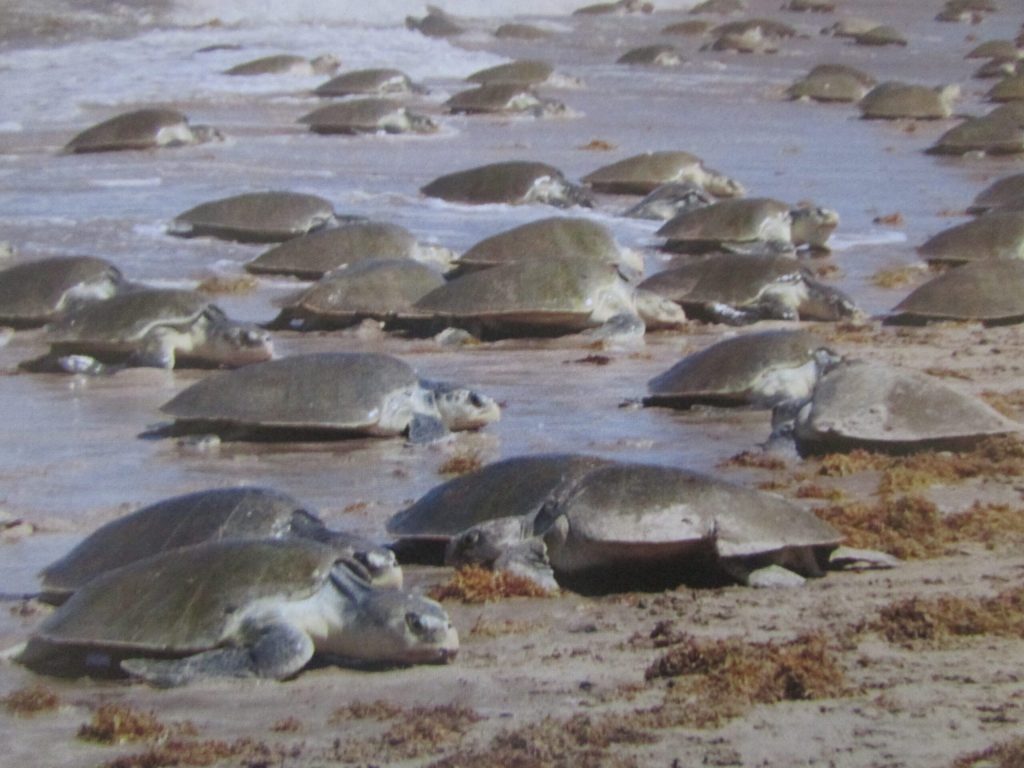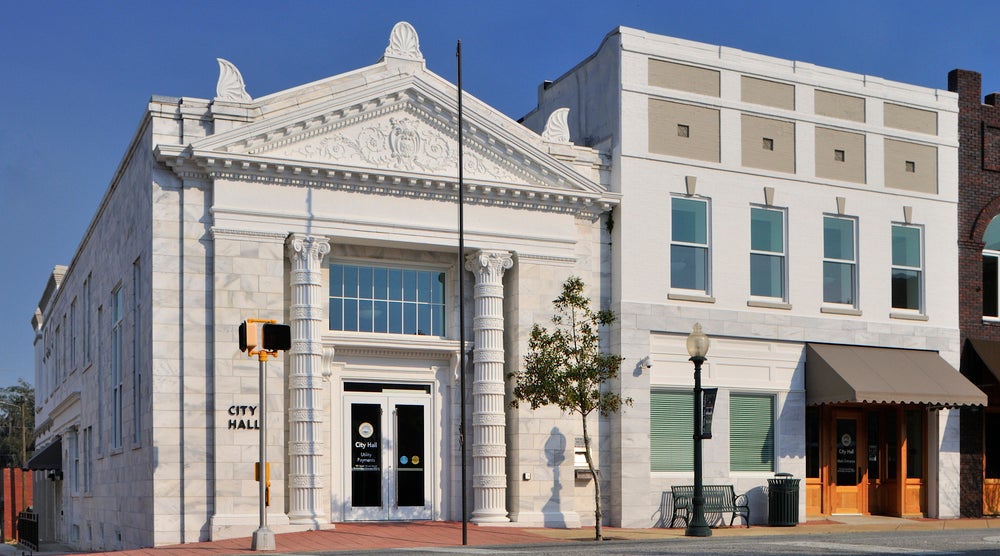Georgia’s Gorgeous Golden Isles
Published 12:22 pm Sunday, June 30, 2024
|
Getting your Trinity Audio player ready...
|
Ah Georgia! She is a beautiful, bountiful and romantic state. But that’s not all! She also has one of the most unique areas of all, her Golden Isles. They have sat where they are, protecting our coastline, since before prehistoric times. They were called home by Indians, Spanish pirates and soldiers, millionaires and recluses, as well as the party loving vacationer.
Their forests have echoed with war sounds and the axes of the colonists, who were building their homes. There has been the boom of cannons and the pop of the musket. These islands have known the destruction of war, and the gracious life of the plantation days. They have also seen abandonment, loneliness and desolation. Their waters around them have been touched by Indian canoes and Spanish galleons as well as the shrimp boats and the tramp freighters.
Historians say that they were called “golden” by the Spanish, who only came there to find gold and get rich for Spain. However, those of us who call Georgia home, think that the treasures of these islands are much more than that. They are the majesty of the longleaf pine and the magnificent moss hung live oaks, the gorgeous magnolias, the protection of the palms, the hard woods of the cypress and cedar. Also, we can’t forget the sea marshes, with that special scent from the grasses and the salty ocean. And, we should not forget the many animals that they feed and provide protection so that they can keep their species alive.
You can tell a lot about the history of Coastal Georgia, just by looking at these islands. From north to south, we have: Cockspur, Tybee, Cabbage, Skidaway, Wassaw, Ossabaw, St. Catherines, Blackbeard, Sapelo, Wolf, Little St. Simons, Sea, St. Simons, Jekyll and Cumberland. These barrier islands protect the long, long Georgia coastline, where there is a rich history.
Amazingly, these tiny ocean islands have protected the Georgia mainland from hurricanes, the ups and downs of the tide, even Yankee gunboats! Several of the islands: Tybee, St. Simons and Sea, have been developed. Others, Sapelo, Jekyll and Cumberland, have some human habitation but development is tightly controlled. The rest of the islands have been, for the most part, allowed to return to nature, undeveloped, pristine and a natural home for wildlife of all kinds. These are all things that you just cannot put a price on for once they are gone, they are gone forever.
The early human history of these islands includes the Native Americans, although little remains of the fact that they once lived here. Either they lived in close harmony with the land and they never left or else the explorers and settlers who followed them, destroyed all the traces that they left behind.
Archeologists have studied the few prehistoric burial mounds that were still intact. Then came the Creek Indians, a nomadic tribe which moved from one village to another with the seasons, as they followed the best time for fishing and hunting and feasting upon all that the islands had to offer. Migratory wild foul, buffalo, deer and yes, the alligators were the most popular game.
The first traders here, were Indians that came down from the mountains. They brought weapons, tools, arrowheads and flint to trade for dried fish and fowl, for fruits and herbs and especially, the dried leaves from the cassina plant, which grows in profusion along the coast and from which a potent ceremonial drink, called the black drink, was brewed.
The Spanish arrived in 1525, but did not stay long. I guess when they realized what they would be facing: the ticks, chiggers, our beloved gnats, and many other kinds of biting insects, along with the assortment of deadly snakes, and of course, the alligator, wilting humidity and heat, dense forests and impenetrable swamps, they must have been turned off. Becoming discouraged, they must have decided not to stay.
However, we do know from their records, that when the Spanish landed on these islands and they found the Native American folks, that they called them Guale. The name may have come from the Spanish pronunciation of the Indian word, “wahali”, meaning “the South”. These Native Americans belonged to the Muskogean tribe and were related by language to the Creek Nation. Spanish missionaries from St. Augustine, Florida, established missions on some of the islands, with varying degrees of success.
However, the Spanish came back when they realized that the French were very interested in Georgia’s coastline. Jean Ribaut came for France and Pedro Menendez de Aviles came for Spain. This was around 1565. At first, everybody got along but we know how that goes.
Of course, the French, and Spanish as well as the Native Americans were now joined by the British, which were considered intruders. Now, everyone fought with everyone else. Pirates were taking advantage of the turmoil that had been created and were stealing valuable skins, brass kettles and axes, which were the most popular items.
What really changed the history of the Coast was the arrival of the British, in 1733. This monarchy wanted to establish Georgia as a buffer between the colonies of South Carolina, to the north, and Spanish Florida, to the south. We were to be a sort of a battle ground between these two.
General James Edward Oglethorpe, leading a group of 114 men, women and children, landed on Yamacraw Bluff, which, in the future, became Savannah. One of the main reasons for Oglethorpe’s success in establishing the British presence was the kindness and help given by Tomochichi, a Yamasee Indian chief who welcomed the British and helped them become established.
There was a mutual friendship and admiration that developed between these two men that lasted until the 90-year-old Chief passed on. They hunted and fished together and the friendly Chieftain always was the mediator between the British and the Indians.
Oglethorpe’s friendly relations with the Natives worked well for him, when his army came into conflict with the Spaniards. With the Indians knowledge of the forests and waterways and of scouting and tracking, they were invaluable allies. After the Spanish forces were conquered in 1742, the coastline of Georgia settled down to a peaceful existence.
A lot was expected from this new colony of Georgia. It had proved itself as a good defense between the Spanish to the south and the Carolinas to the north. However, now it had to prove it was a good source of revenue as well.
The early crops that were encouraged were indigo for its dye, mulberry trees because it attracted silk worms and vineyards for the wine. Our soil and climate were perfect for the production of silk and wines. Experienced vintners brought the finest varieties of grape vines from France and our native muscadines, became the wild grape of the South. However, the imported grapes that were brought here didn’t thrive. Then, the wine made from the native muscadine grapes was not perfect enough for the palate of the vintners, so they felt that this wine was not good enough and would not make money for the British. However, local folks loved it and still do.
The mulberry trees grew well and good quality silk was made here but never in a large enough quantity to prove profitable. The production of indigo however, was most successful and was one of our chief exports.
It was the British that laid out Savannah, with her streets in a grid pattern that remains today. Because of this preservation and other ones, Savannah is considered one of the South’s most beautiful cities.
Savannah grew and prospered until the coming of the Union blockade during the War Between the States, which isolated it from much of the rest of the country. General William Sherman, the Union’s fire bug, spared the city. With his love of fire, I think that he only did this because, thankfully, he ran out of matches! It is because of this, that so much of Savannah’s antebellum architecture remains to this day.
During the peaceful years, the Golden Isles flourished. However, in the 1860s the clouds of war once again gathered by the islands. The coastline was subjected to enemy raids during the War Between the States. The soldiers and sailors of the Confederacy sought to protect the islands and the mainland, as well as the lighthouses, which had been erected to help guide the sailing ships into ports, like Savannah and Darien. In this effort, they would take away the lighting apparatus and burn the stairways up to the tower.
However, the Union forces would set up blockades to cut off shipping to the islands and the mainland. They also would row in to the lighthouses, enter them and before they left, would ravage and destroy them, as much as they could. Therefore, by the end of the War, the islands were devastated and deserted.
Such islands like Tybee and St. Simon’s became critical places to defend and they also had forts built there. They did survive the War, up to a point. However, here too, everything was left in desolation.
However, you are probably familiar with the saying: “You can’t keep a good man down!”, well this described the Southern folks, from young and old, from the farmer to the soldier and sailor, everyone eagerly dug in and did the best they could to put the South and the Golden Islands back together again.
Even so, all the islands wanted to do was doze in a peaceful sleep, and relax in the sun. Mother Nature covered the scars caused by the War, with lush green vines and ferns and beautiful tropical flowers. At the turn of the century, seekers of relaxation and pleasure were finding their way to the Georgia coast. Extensive development started and the late 1800s and early 1900s, saw the restoration of some of the great plantations.
Five of the six larger Golden Isles, became the property of the leading financiers of the Nation. Up and down the waterways, yachts carried owners back and forth between the islands and the mainland. Once again, the folks that visited the islands enjoyed the Southern hospitality of coastal Georgia.
Lightly touched by the World Wars I and II, the islands were patrolled by the Coast Guard boats, airplanes, and blimps. The waterways were being protected by the United States Navy, from enemy submarines, which preyed upon the shipping along Georgia’s coast. Sentry and lookout stations, shipyards, air bases and training schools were located all up and down the Georgia coastline. The training took over the lives of the young as they became familiar with the grim business of war.
When peace came again, many found themselves drawn back to the Golden Isles. Some came to visit and some came to stay, while others came to reminisce about the days gone by.
It is amazing how Georgians have been able to restore their historic forts and buildings. There are quite few that are still picturesque, their ruins still standing and many Georgians want to be sure that they will be preserved. Made from a mixture of soft shells, sand, lime, burned shells and water, this building material is known as tabby. This became the favorite in the restoration of the region. The origin of the word “tabby” is said to come from the Spanish word “tapia”. The name became tabby because of the soft Southern drawl of the South.
Although historians have made extensive studies of the old Spanish records, they have only approximated the locations of some of the ruins that exist today. It is hard to be right on the spot because of the constant shifting of the coastline and the channels that have been created by centuries of erosion, which can wash away landmarks so thoroughly that it seems as though they had never existed.
Identifying many of the ruins has been the subject of speculation for years. Some say that they are the ruins of sugar mills, while others believe that the deserted structures found in the forests, when the fields were cleared for cultivation, were repaired and then used as storehouses. Historians search old records, archeologist dig trying to find out what is what. However, the old vine covered ruins remain inscrutable and beautiful and holding on to their secrets.






